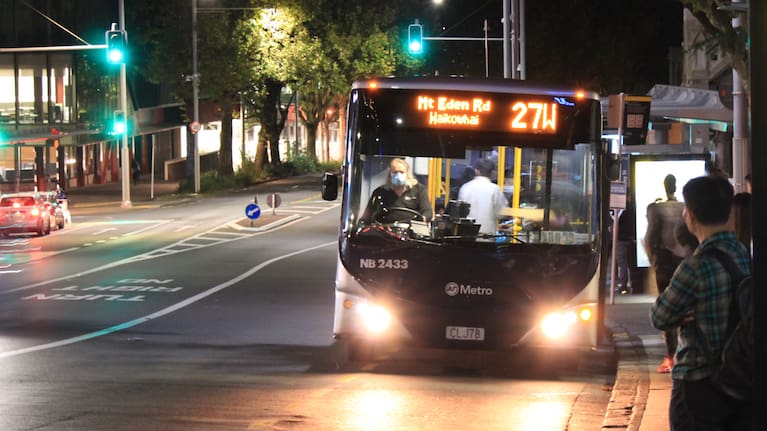New data has revealed Auckland bus drivers reported an assault or physical threat approximately every three days over May and June, as incidents of abuse spiked.
Security shields are being rolled out to buses over the next two years, but the president of a drivers’ union says operators have been “very slow” to act on violence and abuse, which escalated dramatically two years ago and has remained at high levels.
Auckland Transport said it was “doing everything possible” to ensure drivers and passengers were kept safe.
In the past two months, 18 incidents classed under “physical assault” were reported to Auckland Transport (AT), with an additional 29 cases of verbal abuse.
Meanwhile, the agency has been recruiting for more than a dozen new transport officers to help police behaviour across the transit network.
AT classifies the seriousness of incidents with a nine-level grading system.
Graded seven or above, the “physical assault” categories included cases where drivers have been pushed, shoved, struck, punched, touched, or had objects thrown at them.
Auckland Tramways Union president Gary Froggatt described a recent incident where a driver was chased after dodging beer bottles thrown by an unruly passenger.
“We do lose drivers every year where they can’t cope with that sort of incident,” he said.
A constant barrage of verbal abuse also meant “a lot of drivers don’t bother” reporting all the incidents they faced, as they ultimately felt contracted bus companies took “no real action”, Froggatt said – suggesting official data might be an undercount.
In several well-publicised incidents, bus drivers have faced being kicked, punched and assaulted while on the job.
Data indicates 43 cases last year where drivers were pushed, shoved, punched or struck, while 10 others involved a passenger making physical contact.
Statistics before August 2022 did not differentiate between drivers and passengers.
Cases of violence or abuse onboard buses first rose dramatically during Auckland’s Delta Covid lockdown in late 2021.
Froggatt said progress on finding solutions with bus operators for drivers had been “very slow” over the past several years.
Driver shields coming soon
In May, Auckland mayor Wayne Brown and councillors set aside $6.5 million to prioritise the installation of driver security screens, which up until now has only been trialled.
The transparent shields create a barrier between the driver and passengers. New buses would have them from the factory, while older vehicles would need to be retrofitted.
AT public transport operations group manager Rachel Cara said the agency was “doing everything possible to ensure” drivers and passengers are safe.
Hayley Courtney from union representing bus drivers says violence on public transport has reached “crisis” levels. (Source: Breakfast)
“Reported behaviour is still unacceptably high, however, this has trended down since the substantial escalation observed in mid-2022,” she said in a statement.
“We are committed to rolling out bus driver safety screens on 80% of buses within two years. Our project manager has started to get the programme up and running, with a clear mandate to ensure we make fast progress.”
Calls for more transport officers
Froggatt said he expected the shields, which are undergoing design work, would be very effective.
“What we’ve found is that passengers walk down the bus and then whack the driver while they’re driving, which is a major concern. The screen will help isolate that,” he said.
“At the moment, what we’ve told drivers to do is stop the bus – even if it’s in the middle of the road, put your hazard lights on and see if you can exit.”
The union boss added that driver de-escalation training had helped significantly reduce the number of altercations, by up to 50%.
He called for more warranted transport officers to roam buses and for them to have sufficient powers to handle tricky situations.
AT said it was recruiting for another 15 transport officers. The warranted officials work in pairs and hold special powers to check whether passengers have paid fares.
Froggatt said: “In England, they have dedicated transport police, and they can arrest a passenger … I don’t know whether we need to go that far – it’s a tricky situation.”
Cara said the agency continued to work with police, including over the recent school holidays, after a spate of passenger attacks.

“We continue to work closely with police, other agencies and communities to improve safety on public transport and there was a big focus on this over the school holidays, which was impactful,” Cara said.
“We work with police and other partners on targeted interventions that include extra security staff, extra police resourcing, better reporting, and community events.
“We strongly encourage all drivers and passengers to report incidents on the public transport network. Customers can contact us anonymously via Crimestoppers, or via the AT website or contact centre.”









